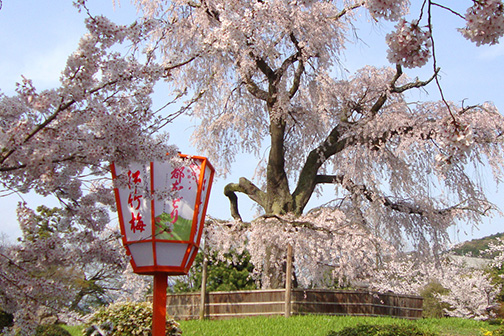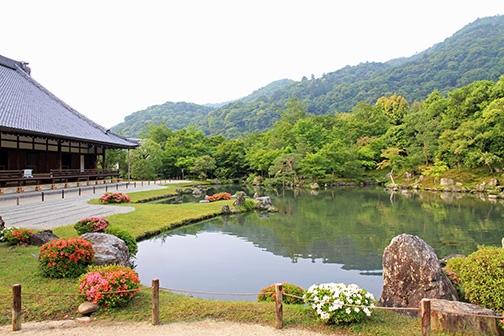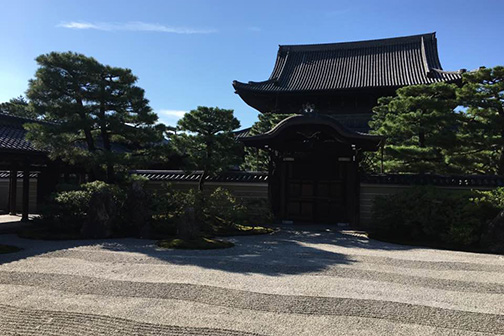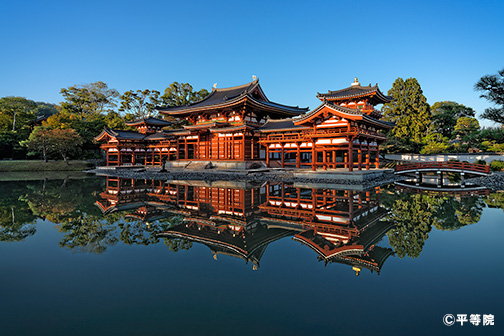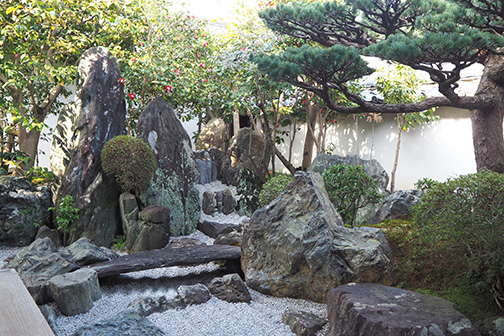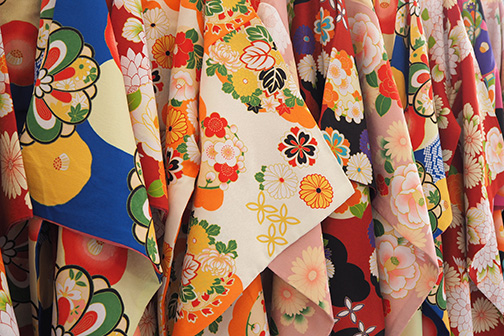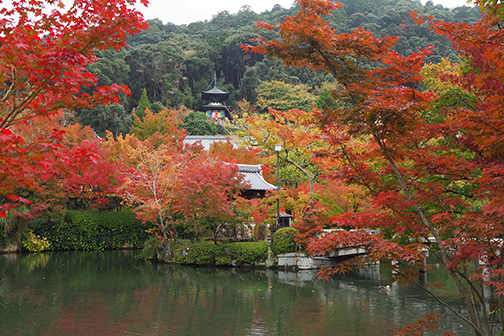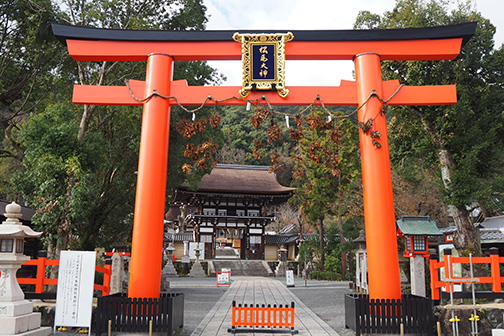
Timeless Kyoto
Explore Kyoto: Tours and Itineraries
海 -Sea-
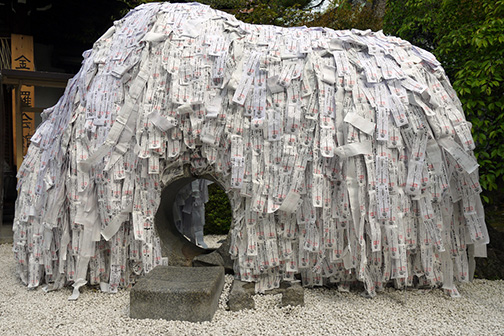 Yasui Konpira Shrine
Yasui Konpira Shrine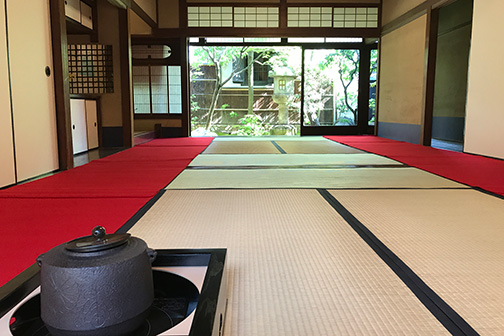 Machiya Town House
Machiya Town House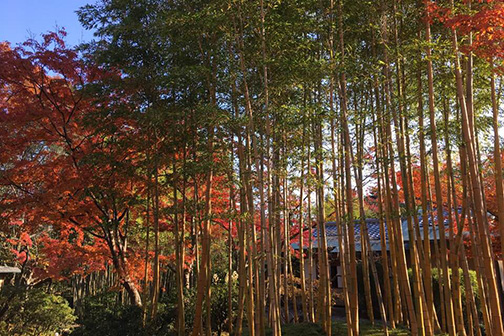 Shokado Garden Art Museum
Shokado Garden Art MuseumKyoto
Yasui Konpira Shrine
Konpira Shrine is dedicated to travelling, agriculture and the fisheries industry. This odd little shrine on the edge of the Gion geisha and entertainment district is also famous for its so-called enkiri or enmusubi stone, which is said to have the power to initiate good relationships as well as break off bad ones when the person crawls through the stone.
Machiya Townhouse Tour
Machiya are traditional wooden townhouses and feature an architectural design with a narrow entrance and deep interior. If you really want to experience Kyoto, you can visit a machiya to get a sense of the traditional lifestyle lived by the local people.
Saba-zushi sushi lunch at a local restaurant
Saba-zushi is a special kind of sushi that originated in Kyoto and is popular among the people of Kyoto, especially during festivals. Saba-zushi consists of mackerel that has been cured with salt and vinegar. An entire fillet is placed on top of rice and then sliced into sections.
Experience Japanese calligraphy at Shokado Garden Art Museum
Learn Japanese calligraphy with a professional calligraphy master at Shokado Garden Art Museum. The museum has approximately 22,000 m2 of gardens with distinct seasonal flora as well as recreated tea ceremony houses, calligraphy works and brush paintings—all associated with the medieval Japanese Buddhist monk Shokado Shojo.
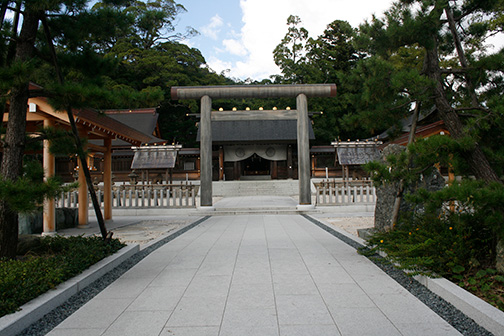 Motoise Kono Shrine
Motoise Kono Shrine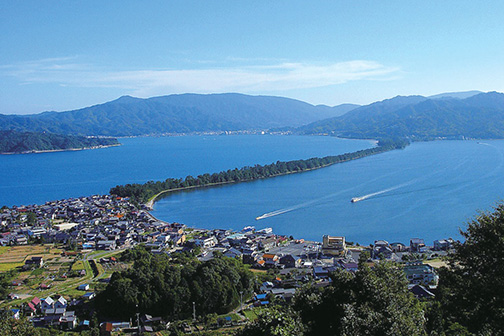 Amanohashidate
Amanohashidate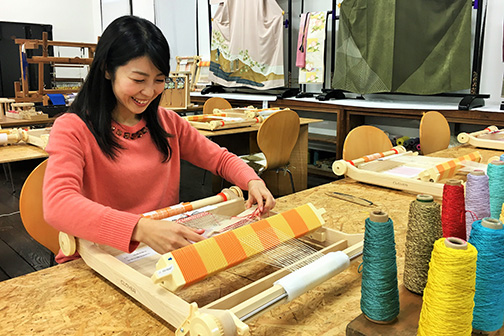 Traditional weaving workshop
Traditional weaving workshopKyoto – Amanohashidate & Monju area
Motoise Kono Shrine
Motoise Kono Shrine is an ancient shrine with close ties to the famous Ise Grand Shine in Mie Prefecture. It is said that the goddess of agriculture, Toyouke-Omikami, who once resided in this area and was worshipped at this shrine, was called to Grand Ise Shrine by the sun goddess, Amaterasu-Omikami. She has been enshrined at Grand Ise Shrine ever since.
Cable car to Amanohashidate View Land observation deck
Enjoy panoramic views of one of Japan’s three most celebrated scenic spots! Amanohashidate is said to have been a ladder used by a god to travel back and forth between heaven and earth that one day fell to earth.
Traditional weaving workshop
Try your hand at making a coaster with real chirimen silk crepe. Silk production is a local industry on the Tango Peninsula in northern Kyoto Prefecture, and chirimen silk crepe is one of the oldest weaving techniques in Japan.
Stroll along Chirimen Kaido
After trying the chirimen workshop, stroll along Chirimen Kaido, a district famous for the production of silk crepe. This district played such an important role during the Edo Period (1603–1868) that it was nicknamed “silk crepe road.”
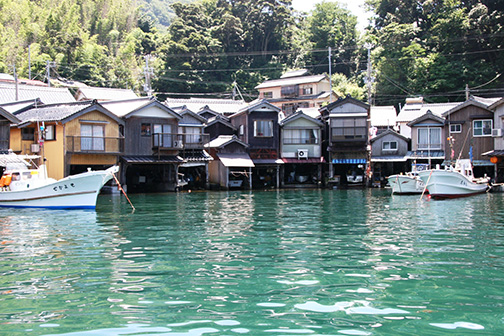 Funaya (fisherman’s boat houses)
Funaya (fisherman’s boat houses)
Ine Town (Kyoto Prefecture) – Fukui (Fukui Prefecture)
Cruise on Ine bay
The best way to see the town of Ine and its funaya (fisherman’s boat houses) is from the sea.
Funaya (fisherman’s boat houses) Tour and mondori experience
Stroll around the funaya (boat houses) on the streets and visit one inside. You can see the homes’ unique construction in real life. You can also experience the special Ine fishing technique called mondori, which is regularly practiced in this region.
Sake Brewery
Visit Ine Mukai Brewery, where you can taste Japanese sake crafted by one of only a few woman brewers in Japan. All participants receive an ochoko sake cup as a souvenir.
Transfer to Fukui Prefecture
Eihei-ji Temple
Eihei-ji Temple, located 16 km southeast of Fukui City in the center of the prefecture, is the headquarters of the Soto sect of Zen Buddhism, with 15,000 branch temples nationwide. The temple was originally built by the Buddhist monk Dogen in the 13th century.
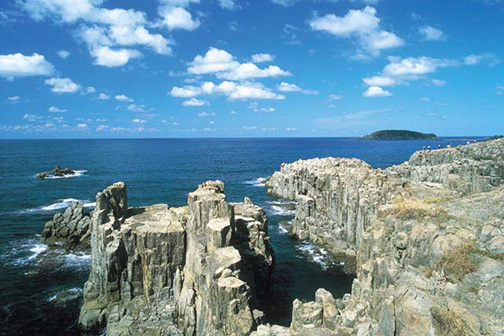 Tojinbo cliff
Tojinbo cliff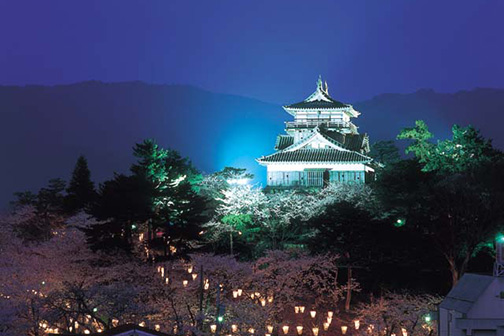 Maruoka Castle
Maruoka Castle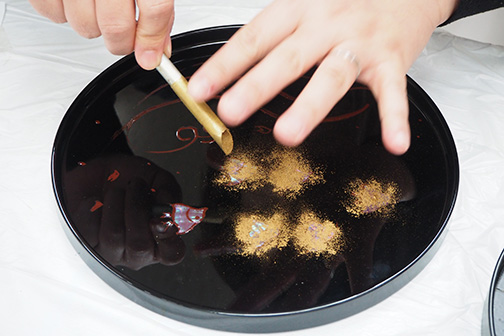 Lacquerware workshop
Lacquerware workshopFukui – Awara hot spring area
Tojinbo cliff
Tojinbo is a rugged, precipitous cliff that has been eroded by raging waves within Echizen-Kaga Quasi-National Park. The sheer cliff stretches for over one kilometer and is designated as a precious natural monument.
Maruoka Castle
Maruoka Castle (Maruoka-jo) was built in 1576 by the feudal lord Shibata Katsutoyo. The castle often changed hands due to war, and eventually became the castle to the Arima clan in the latter half of the 17th century. It was completely destroyed in the great earthquake of 1948, but was reconstructed in 1955.
Lacquerware workshop
Echizen urushi (lacquerware) is a traditional Japanese craft. Try traditional lacquerware techniques yourself to make a coaster, soup bowl or plate.
Overnight stay at a traditional Japanese inn with hot spring baths
Awara hot spring baths date back to 1883, when a farmer was digging an irrigation well in a reedy swamp and discovered an 80-C° hot spring with low salt content. The next year in 1884, several hot spring hotels opened here and attracted visitors to the therapeutic waters. Please relax at a traditional Japanese style inn and enjoy soaking in the hot springs.
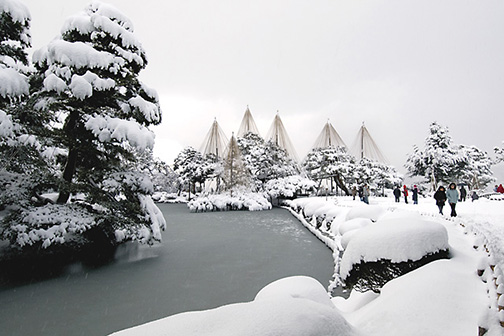 Kenrokuen Garden
Kenrokuen Garden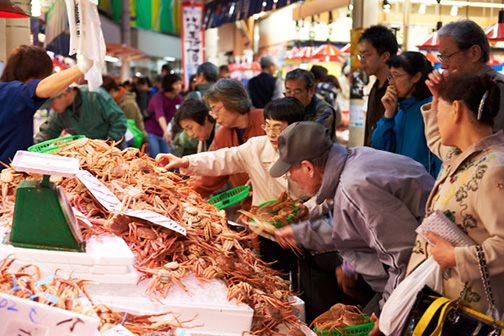 Omicho Market
Omicho Market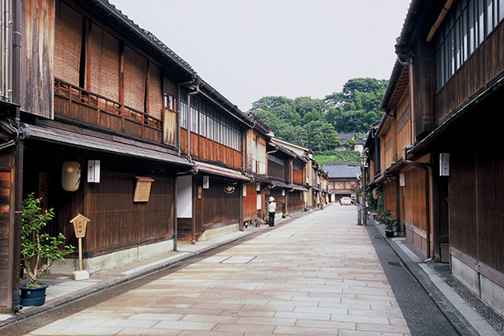 Nagamachi Samurai District
Nagamachi Samurai DistrictAwara hot spring area – Kanazawa (Ishikawa Prefecture)
Kenrokuen Garden
Kenrokuen Garden is located in the central part of Kanazawa City. It is considered one of Japan’s three most beautiful landscape gardens. Once the garden of Kanazawa Castle, it became open to the public in 1874. There are many spots of interest within its spacious grounds covering some 100,000 m2.
Omicho Market
Omicho Market has been Kanazawa’s largest fresh food market since the Edo Period (1603–1868). Today it is a bustling network of covered streets lined with some 200 shops and stalls. Many shops sell the popular local seafood and produce, and you can also find flowers, clothing, kitchen tools and more.
Nagamachi Samurai District
Nagamachi was a samurai district located at the foot of Kanazawa Castle, where samurai and their families used to reside. The area has a beautifully preserved historic atmosphere with former samurai residences, earthen walls, private entrance gates, narrow lanes and canals.
Ninja Temple
Myoryu-ji Temple, commonly known as Ninja Temple, was built by the Maeda clan, which ruled over the region during the Edo Period (1603–1868). While not actually associated with ninja, the temple earned its nickname because of its many deceptive defenses.
Kutani ware
Kanazawa’s modern Kutani porcelain is based on a revival of Kutani porcelain dating back to early in the 19th century. Initially, Kutani porcelain was made in Kutani Village in the southern part of Ishikawa Prefecture for several decades beginning in the middle of the 17th century.

